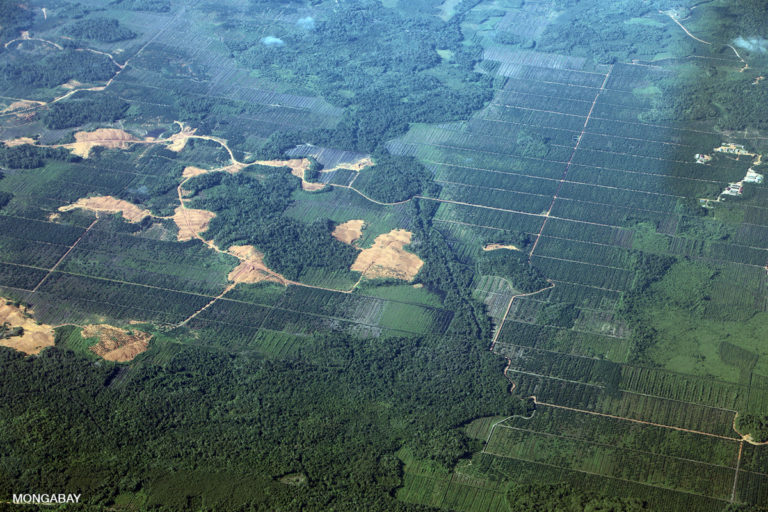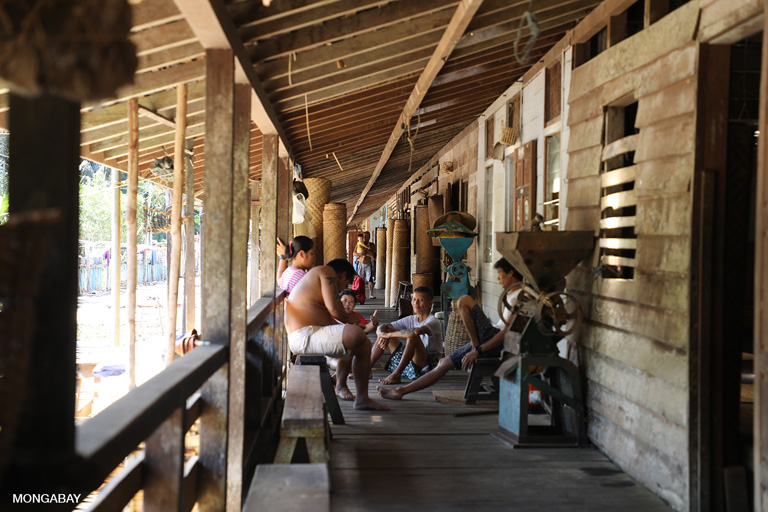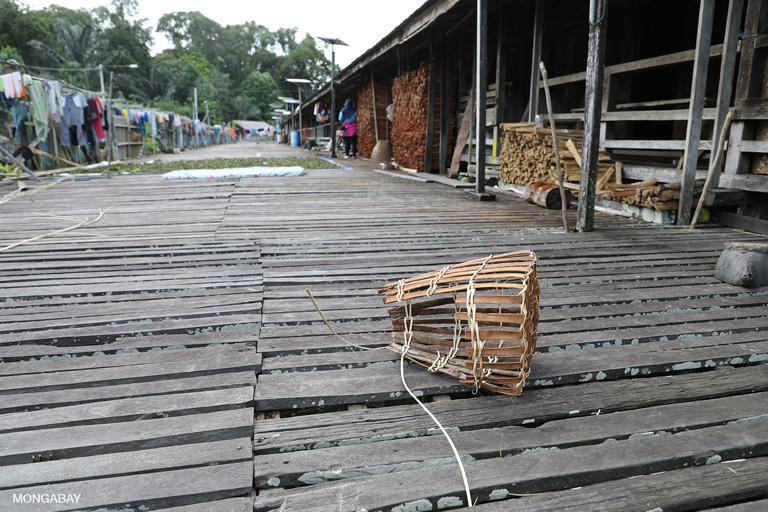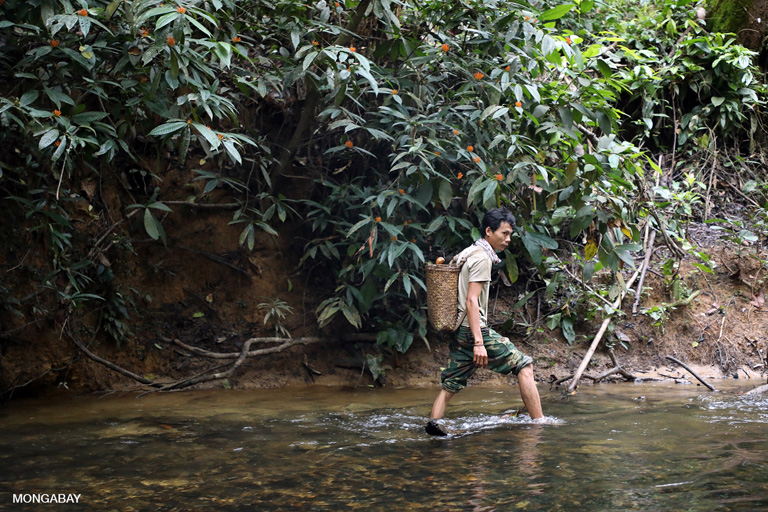- Mongabay founder Rhett A. Butler writes about his visit to Sungai Utik, a Penan Iban community in Indonesian Borneo last month.
- Rhett visited Sungai Utik to see how the community has protected their customary forest from logging and deforestation.
- Sungai Utik was recognized for their efforts with the prestigious U.N. Equator Prize last month.
- This post is insider content, which is available to paying subscribers.
In 2007, the World Wide Fund for Nature (WWF) launched the Heart of Borneo, an initiative that aimed to conserve 22 million hectares (54 million acres) in the transboundary area of Brunei, Indonesia and Malaysia. The agreement was signed between the three countries in February of that year. “HOB” conferences have been held on a regular basis since then and the WWF has commissioned consultants to produce several reports cataloging the biodiversity of the area, with a special focus on newly discovered species.
While the accord was heralded by the WWF and others as a key step in saving Borneo’s fast-disappearing forests, critics pointed out that the initiative “protected” some of the lowest-risk forests on the island. Only a small fraction of Borneo’s most endangered forests — the lowland rainforests of Sarawak in Malaysia and Kalimantan in Indonesia — were represented. And much of the heart of Borneo was already officially conserved in recognized protected areas like Batang Ai National Park, Lanjak Entimau Wildlife Sanctuary, Gunung Mulu National Park, Crocker Range National Park, Kinabalu National Park in Malaysia; Kayan Mentarang National Park, Betung Kerihun National Park, Bukit Baka Bukit Raya National Park, Danau Sentarum National Park in Indonesia; and Ulu Temburong National Park in Brunei. Critics said much more would need to be done to protect Borneo’s lowland forests.

























